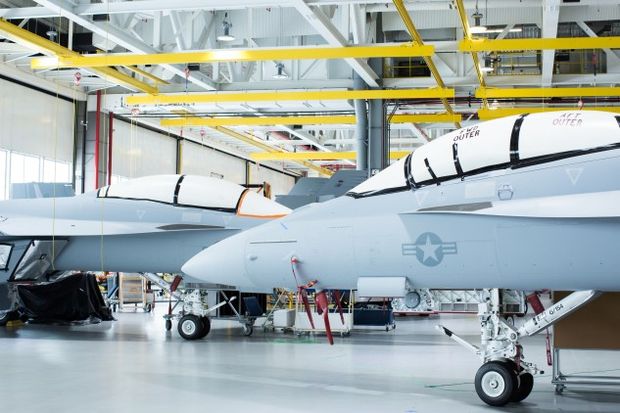U.S. Military Fighter Jets Miss Readiness Goals, Watchdog Finds
By Tony Capaccio (Bloomberg News) and Roxana Tiron
Bloomberg Government subscribers get the stories like this first. Act now and gain unlimited access to everything you need to know. Learn more.
- GAO scrutinized mission-capable rates of military aircraft
- 24 types of aircraft failed to meet goals set for readiness
Lockheed Martin Corp.‘s F-22 Raptor and Boeing Co.’s Super Hornet fighter aircraft — the Pentagon’s top combat jets — failed to meet their mission targets from fiscal year 2011 through 2019, even as the Pentagon spent billions of dollars on weapons upkeep, according to the leading government watchdog.
Lockheed Martin’s F-35 Joint Strike Fighter — the most expensive program in Pentagon history — met few of its goals for aircraft availability and mission capability from fiscal 2012 through 2019, although all three variants started to show progress during the time period, according to the Government Accountability Office.
The comprehensive GAO assessment raises questions about the extent to which U.S. warplanes would be available for use if needed.
The watchdog examined 46 types of aircraft, including helicopters, across all military services to determine whether the fleets met mission-capable rates — the percentage of total time an aircraft can fly and perform at least one mission. Those rates are used to assess the health and readiness of an aircraft fleet.
More than half of the aircraft types examined didn’t meet their annual mission-capable goals in any fiscal year, according to the GAO report. The watchdog didn’t provide the most current mission-capable rates of the aircraft examined.

The Pentagon spends tens of billions of dollars every year on upkeep of weapons to ensure they are available to simultaneously support current military operations and meet future demands.
For instance, operating and support costs for all three variants of the F-35 have increased over time as more airplanes are produced. From fiscal 2011 through 2018, costs increased from $55.6 million to $2.2 billion. About $758.3 million of that, or about 35%, was spent on maintenance. The majority of the costs were from the F-35A, the Air Force version, which has the most aircraft, according to GAO.
Mission Capability
Ready-to-fly aircraft are a critical component of the 2018 National Defense Strategy. Then-Defense Secretary James Mattis in October 2018 ordered the Air Force and Navy to elevate the readiness rates of all its tactical aircraft to 80% by September 2019.
“We found that none of these aircraft had achieved the 80 percent mission capable goal, when mission capable rate data are averaged for each day in fiscal year 2019,” GAO wrote.
GAO’s finding undercut a key claim made repeatedly by President Donald Trump that during his four years “the American military has been completely rebuilt” as “U.S. Armed forces are stronger than ever before.”
Fielding “this great military and equipment, however, does not mean we have to use it,” Trump said.
Super Hornet, F-22 Missed Goals
The GAO report raises questions about warplane readiness. For example, the Navy’s primary fighter, the Boeing Super Hornet, did not achieve its mission-capable rates from 2011 through 2019, the third year of Trump’s military build-up. From fiscal 2011 to 2018, the operation costs to support the Navy jet increased $1.13 billion due in part to extensive maintenance needs, GAO said.
Even more surprising, none of the 182 Lockheed Martin F-22 Raptors — the U.S.’s top stealth fighter declared operational over a decade ago — achieved mission-capable goals in any years GAO examined.
The aircraft mission-capable rates decreased during the nine years as total operating and support costs increased from about $2.34 billion in fiscal 2011 to about $2.42 billion in fiscal 2018.
According to program officials, the F-22’s low rates “were tied to degradation of the aircraft’s low-observable system coating” used to lower the jet’s radar image, supply shortages, “and execution of higher-than budgeted flying hours,” GAO said.
To contact the reporters on this story: Tony Capaccio (Bloomberg News) in Washington at acapaccio@bloomberg.net; Roxana Tiron in Washington at rtiron@bgov.com
To contact the editors responsible for this story: Sarah Babbage at sbabbage@bgov.com; Larry Liebert at lliebert@bloomberg.net
Stay informed with more news like this – from the largest team of reporters on Capitol Hill – subscribe to Bloomberg Government today. Learn more.